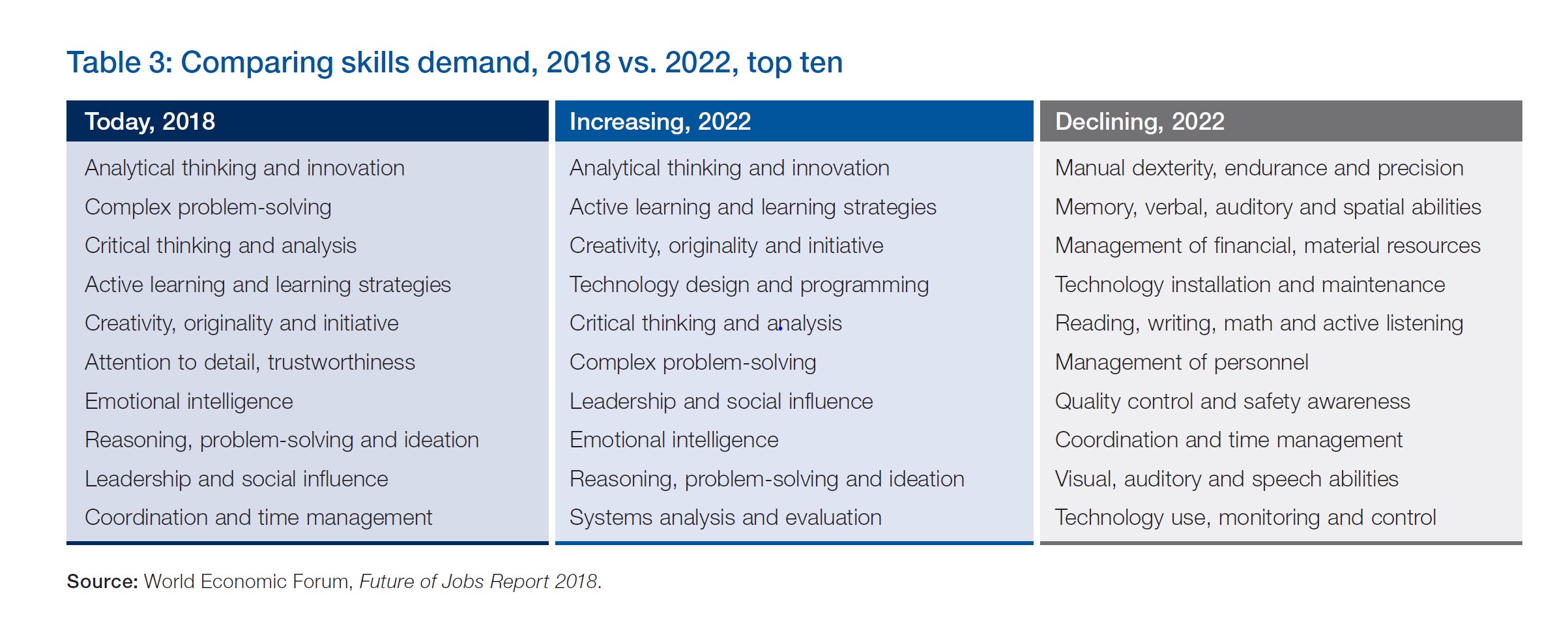Learning on the job
Reskilling and upskilling are key talent management strategies of the future. The workplace has a key role to play.
3 minutes to read
The modern workplace is becoming many different things; a place to exercise, a place to socialise, even a place to take a nap. Now it is also becoming a place for education. An article in Raconteur stated that the average person entering the workforce in 2030 will have to plan to reboot their skills eight to ten times throughout their working life. In response companies and employees are prioritising reskilling and lifelong learning. This will accelerate the demand for physical spaces for learning as well as change the way workspaces are used and, therefore, how they are designed.
Two dynamics are driving this trend. Firstly, the fourth industrial revolution is creating entirely new jobs while redefining existing roles. This is happening with increasing speed and frequency. Automation and artificial intelligence will result in at least 54 per cent of all employees globally requiring significant reskilling and upskilling by 2022. That is just two years away. Secondly, employees expect to be continually developed and want their employers to take greater responsibility for this. According to ManpowerGroup’s 2020 “What Workers want” survey, 79 per cent of employees who are offered free training like their job, compared to 61 per cent who are not offered training.
So how can companies deliver training to all of their employees on a continual basis and how will this influence occupational requirements?
Companies may need education facilities within their corporate real estate portfolio. This could take the form of town-hall areas, quiet zones or virtual reality centres for immersive learning. It could be large corporate universities or regional learning centres. For example, the Certis Corporate University was launched in November 2019 as part of Certis' commitment to invest in employees and build a future-ready workforce. The S$10 million facility leverages innovative learning technologies and new teaching approaches to drive effective continuous learning. Within the next three years, around 20,000 Certis employees are expected to benefit from over 30 programmes covering the use of several skills such as artificial intelligence. Similarly, CVS operates regional learning centers in Boston, Cleveland, New York City, and Washington, D.C. Each houses classrooms, office space, and a full mock pharmacy that closely resembles an active CVS Pharmacy location.
The corporate real estate portfolio will need to be flexible, agile and drive collaboration as employees look to learn from each other. Numerous law firms are seconding their legal talent into tech and data teams as law and tech converge. They are also adopting activity-based working and hot-desking so employees can move around. One of the most recent examples is Clyde & Co who announced in December 2019 that they will offer a six-month training seat for certain employees within their data lab.
Some companies will look outside of their organisations, building training programmes with academic institutions. This has the potential to influence location decisions with a need to be in close proximity to academia, but it will also amplify the need for real estate to be more responsive to changes in utilisation as employees go off-site to conduct learning or take time off to complete longer courses. AT&T has rolled out a $1bn retraining programme, after discovering that nearly half of its 250,000 employees lacked the necessary STEM skills required to keep the company competitive. It has worked in partnership with Georgia Tech to create a Master of Science in Computer Science degree. The company is also collaborating with the University of Notre Dame and the University of Oklahoma on data science and analytics courses.
The realities of rapid technological change and changing employee needs are already here, generating unprecedented changes to the workforce. Companies are acting with greater urgency, investing in retraining and reskilling of existing staff while employees are embracing lifelong learning. The corporate real estate portfolio will need to be ready now to support this while on the supply side education facilities should be a core part of the amenity mix in order to meet customer needs.
